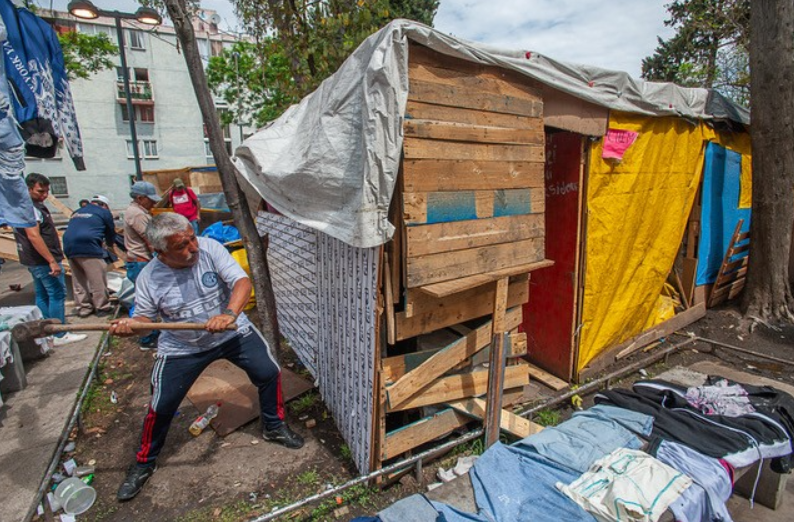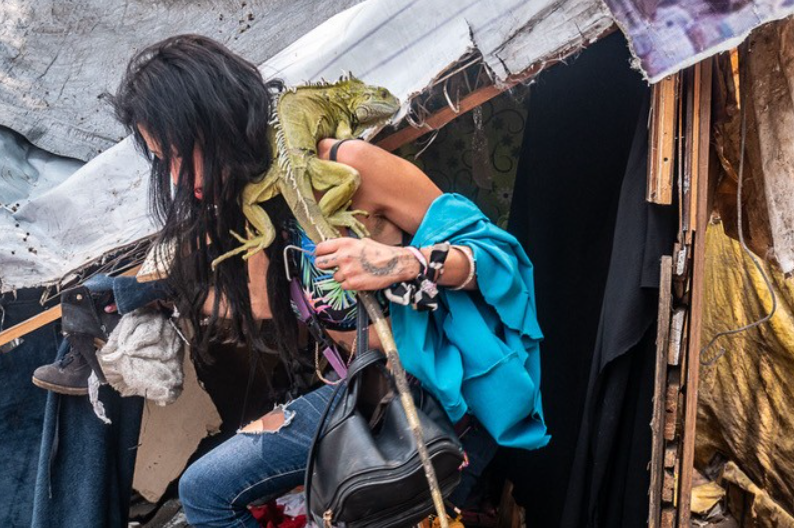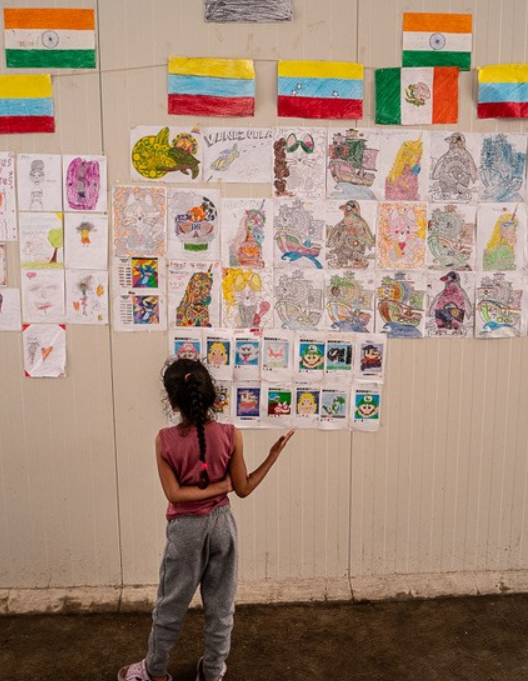Migrants marooned in Mexico City as passage north ebbs and many consider a journey reversal

Migrant shelters fill with people of broken dreams
By DUDLEY ALTHAUS and KEITH DANNEMILLER
Edited by Dianne Solis and Alfredo
Puente News Collaborative Editor’s note: This story was co-published with Puente News Collaborative, a bilingual nonprofit newsroom, convener, and funder dedicated to high-quality, fact-based news and information from the U.S.-Mexico border.
MEXICO CITY -- With late morning traffic surging, Yudelis Ferreira slips out of the migrant shelter with her three young children, heading for another day hawking popsicles in the Mexican capital’s hard heart.
This has been Ferreira’s life for months now, her family’s plans for a future in the United States scuttled with the arrival of the Trump administration.
Like unknown thousands of other migrants – mostly Latin Americans but also from Asia and Africa – Ferreira and her children find themselves marooned on the migrant trail, well and permanently short of the goal.

“We are stuck,” Ferreira, 29, said, putting a succinct end to two years of migrating since leaving Maracaibo, the sweaty city that buckles Venezuela’s stagnant oil belt. “We have to have a way to make some income.”
As many as 5,000 mostly Latin America migrants are now housed in 16 Mexico City shelters or in private apartments or houses in some of the capital's poorer neighborhoods, said Emanuel Herrera, director of Vasco De Quiroga, one of the four shelters operated by the Mexico City government. He cautioned that numbers are fluid. The move is part of a government strategy to discourage migrants away from the border and into the interior, particularly to Mexico City, according to Mexican officials in Ciudad Juárez.
The migrant flow north has been all but squelched since then President Biden toughened regulations in Spring 2024 -- and especially once Trump -- took office in January.

Crossings through the Darien Gap, the forbidding jungle separating Panama from Colombia, have all but ended. Data from Panama’s immigration service shows a 98 percent drop in migrant crossing this year compared to 2024’s already declining number.
Encounters with undocumented migrants at the U.S.Mexico border nosedived to 9,300 in June, compared to about 96,000 in December, the last full month of the Biden presidency, according to U.S. government statistics. As if marooned in seafront tidal pools, thousands of migrants remain stranded along trails in Central America and Mexico. With young children to feed and clothe, many are working up various plans – B, C or none at all – as the weeks tick past.
They face long delays in finding affordable passage home or a means of jumping a fortified U.S. border or a way to settle in where they find themselves.

The Vasco de Quiroga shelter where her family is staying serves as home for now for some 330 people. Most are Venezuelans, but the shelter residents include Colombians, West Africans and a hapless handful of men from India.
All have been on the migrant trail for months, even years, many stopping enroute to earn money to continue on. Relationships have formed. Mothers have given birth on the journey. People have died. But belief in a new and perhaps better American future have pulled them along.
Now, those dreams are dust. This shelter – and what may come afterward -- prove as good as it gets.
“Since Trump returned there are many people trapped in the city,” said Herrera, 32, the shelter director.
“They had a light at the end of a tunnel,” Herrera said of the migrants’ hope to reach the United States. “But now that light has been extinguished.”
For many now living here the shelter is a third stop in Mexico City this year.
They had previously squatted in a shambolic cluster of wood and plastic sheds erected in a downtown city park in front of La Soledad Roman Catholic church. After city workers dismantled that camp in March, many migrants erected another makeshift settlement five blocks away on a green patch in front of Mexico’s lower house of Congress.
That second camp was torn down in late May.
“The first problem we had to attack was the encampments,” Herrera says of the migrants, citing the dangers of criminal gangs preying on the migrants in the shanty towns. “We are focused on making a more proper ecosystem for them.” All but two of the formal shelters are managed by non-governmental aid groups. The city government has been issuing migrants identity cards that can allow them to establish debit card accounts and get formal work, Herrera said.

The Vasco de Quiroga shelter hugs the edge of Tepito, a long-established smugglers haven considered by many as one of the most dangerous neighborhoods in Mexico, if not the hemisphere.
While the shelter’s residents are free to come and go as they wish – and many leave for jobs or to sell whatever they can at traffic stops – police at the shelter’s gate check identification of outsiders entering.
Migrants are divided into crowded individual dormitories – for single men, women and families with children – many sleeping in bunk beds three tiers high. Communal bathrooms have toilets and showers. Meals are prepared in a large, seemingly well-stocked kitchen.
During a recent visit, migrant children played volleyball in the shelter’s courtyard while some of the Indian men taught Latin American women the art of making very spicy omelettes like those made in New Delhi.
Young children gather and look over the art they’ve pinned to a wall near the kitchen. Flags from Venezuela and Colombia sit atop the display. But there is a sketched homage to “migrant mothers” and colorful drawings of penguins, unicorns and pirate ships. Kids’ stuff.
Ferreira, her three children and partner Alejandro have been on the road for two years. After first living in Ecuador, they travelled north last year, reaching Ciudad Juarez, bordering El Paso. Mexican officials flew them back to Tapachula on the Guatemala border, and then five made their way to Mexico City from there. The reverse migration would have seemed unfathomable a year ago.
Now Ferreira’s family -- and many of the other migrant castaways -- have no plan but to await free flights sponsored by the Venezuelan government. Such flights so far are few and seldom. Others, at their wits’ end, say they will try walking or taking a bus. They’ll use scant funds or get odd jobs for a costly trip home.
For everyone, the wait will prove uncertain.
“Mexico City is not in my plans, for sure. But it is for now,” said Kulqueeb Saim, a 28-year- old from New Delhi who has passed through more than a dozen countries since hitting the migrant trail a year ago. He’s now planning to return home as soon as possible.
“There are too many problems in India,” Saim said with a slight smile. “But America is over.”
